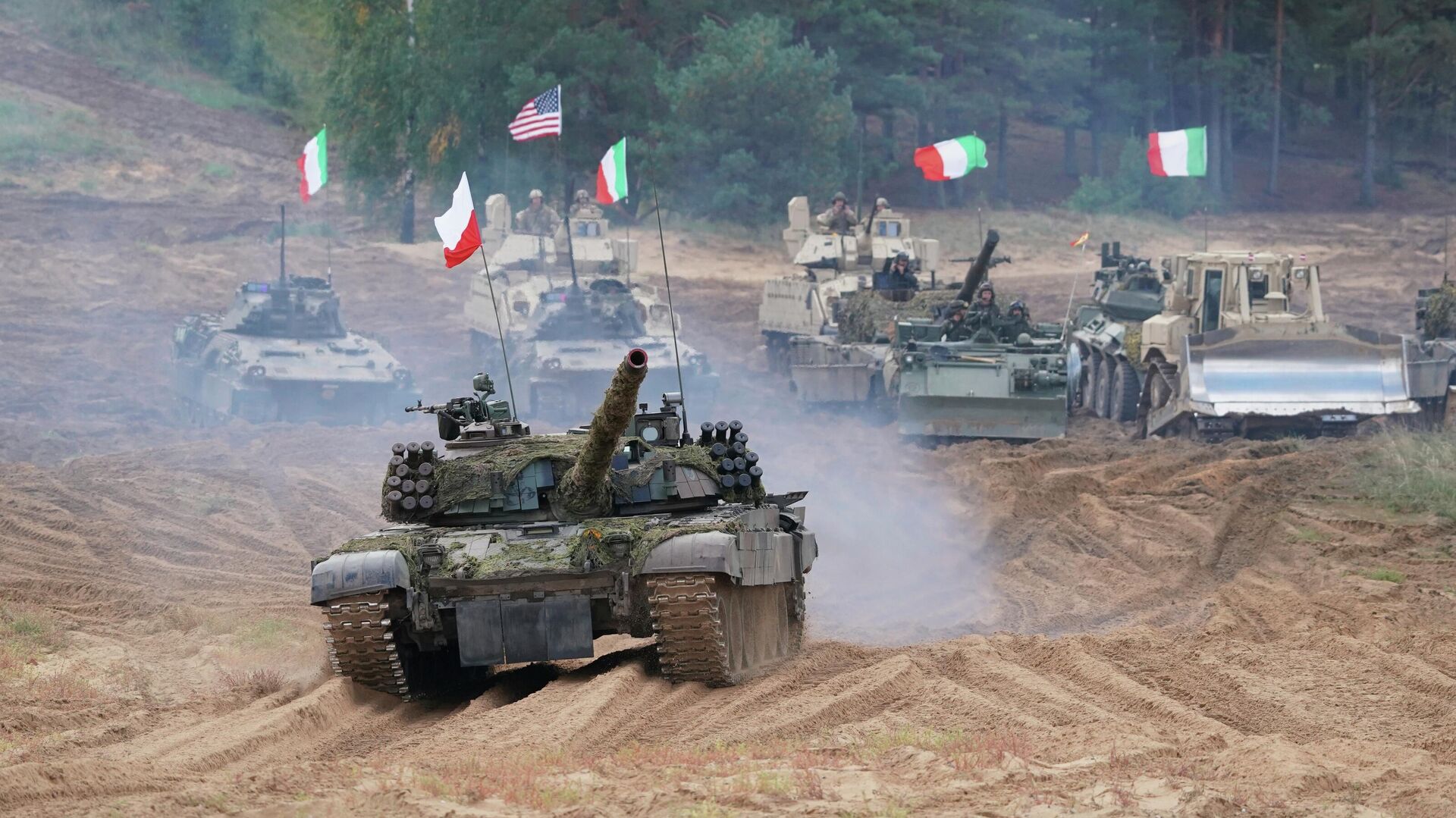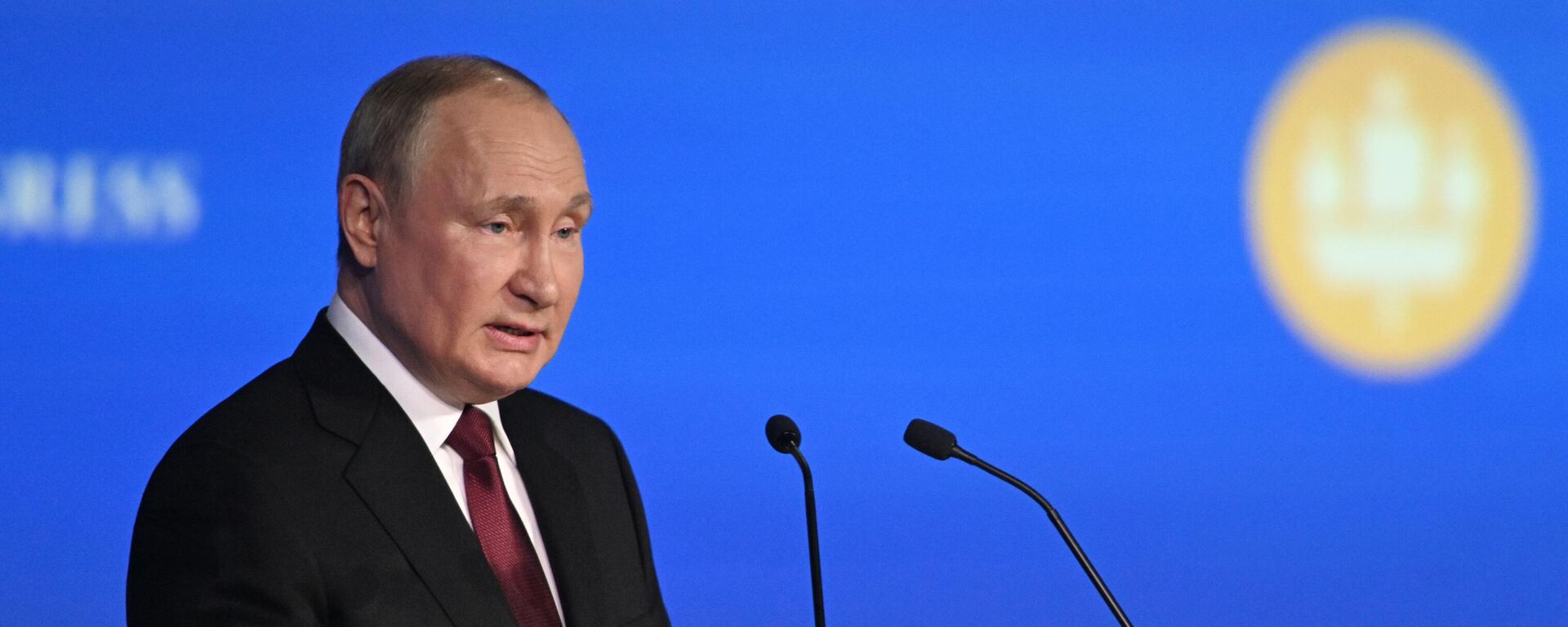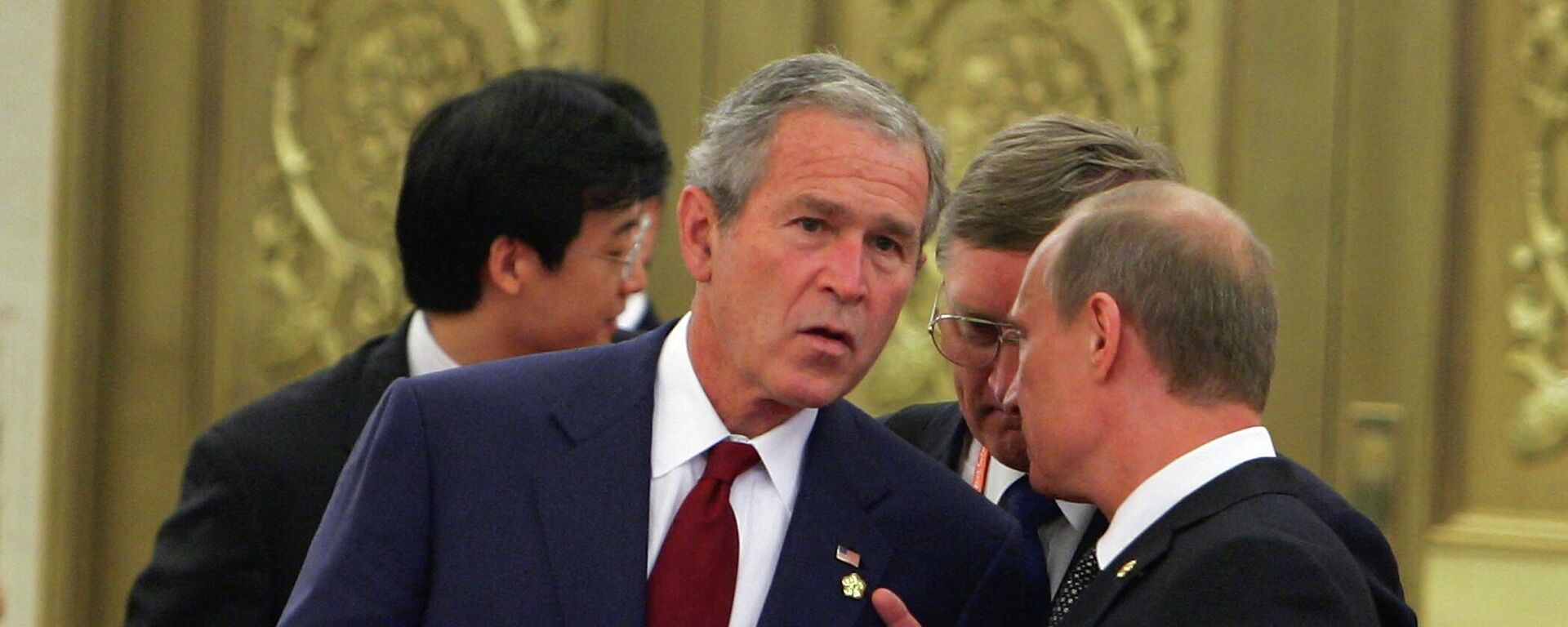https://sputnikglobe.com/20220626/nato-could-expand-eastern-european-battlegroups-to-brigade-or-division-size-forces-report-1096679715.html
NATO Could Expand Eastern European Battlegroups to Brigade or Division-Size Forces: Report
NATO Could Expand Eastern European Battlegroups to Brigade or Division-Size Forces: Report
Sputnik International
The Western alliance will be holding its annual summit in Madrid on June 29-30, promising to unveil a brand new “strategic concept” targeting both Russia and... 26.06.2022, Sputnik International
2022-06-26T15:49+0000
2022-06-26T15:49+0000
2022-06-26T15:49+0000
nato
troops
brigade
forces
https://cdn1.img.sputnikglobe.com/img/07e6/04/19/1095021516_0:190:3203:1991_1920x0_80_0_0_b2d34447615af0edf3ce9d53dbc44812.jpg
The upcoming NATO summit in Madrid may include an announcement of plans to double the size of the battlegroups stationed in Eastern Europe, with the possibility that these forces be turned into full-fledged brigades, El Pais has reported, citing sources said to be familiar with discussions on the matter.El Pais suggested that the summit will mark a “turning point” in NATO’s post-Cold War history, with the bloc expected to experience “a kind of refoundation” via the “Madrid concept,” a new strategic model which the newspaper’s sources said would “put an end” to the bloc’s “ties with Moscow.”NATO first deployed so-called “enhanced forward presence” battlegroups to Poland and the Baltic states in 2017, in the aftermath of the 2014 US-backed coup in Kiev which overthrew the country’s government and culminated in the current crisis with Moscow. Four additional battlegroups are being formed in Bulgaria, Romania, Hungary and Slovakia, bringing the total number to eight.Separately on Sunday, Spanish Foreign Minister Jose Manuel Albares clarified that while NATO was actively discussing expanding the alliance to the Nordic states of Sweden and Finland, Kiev is not under consideration, and its status “has never been on the negotiating table.”On Saturday, Ihor Zhovkva, the deputy chief of the Ukrainian president’s office, told the Financial Times that Ukraine is no longer seeking to join the Western alliance, since its members have rejected Kiev’s aspirations. Instead, he said, Ukraine will be looking to work with the bloc on its “partnership,” and pressure it into recognizing Ukraine’s role as a “cornerstone of European security.”NATO’s current strategic concept – which highlights the alliance’s mission and security goals, was last updated in 2010, at the height of the Western bloc’s occupation of Afghanistan and the US-led ‘war on terror’.The Western military alliance first recognized Ukraine’s “NATO aspirations” at its Bucharest summit in 2008, ignoring Russian security concerns related to the bloc’s gradual expansion toward Russia’s borders. The step was approved by US President George W. Bush, despite opposition from European leaders, including Chancellor Angela Merkel of Germany and French President Nicolas Sarkozy. Bush’s own defense secretary, Robert Gates, told Bush that offering Ukraine the prospect of NATO membership would be “truly overreaching” and “recklessly ignoring what the Russians considered their own vital national interests.”Kiev’s aspirations to join NATO and the European Union were enshrined into the country’s constitution in February 2019.NATO has expanded eastward in three major waves, incorporating the Czech Republic, Hungary and Poland in 1999, Bulgaria, Romania, Slovakia, Slovenia and the Baltic states in 2004, and Albania, Croatia, Montenegro and North Macedonia between 2009 and 2020. The bloc pressed forward with the expansion despite promises by George H.W. Bush-era secretary of state James Baker not to expand the alliance “one inch to the east” of a reunified Germany.Even Boris Yeltsin, the alcohol-swilling 1990s Russian president who yucked it up with President Clinton and asked God to bless America, characterized the prospect of NATO expansion toward Russia as a “threat.” As far back as 1994, after Clinton reversed course on his predecessor’s NATO policy, Yeltsin asked alliance members “why” they were “sowing the seeds of mistrust” and threatening to plunge Europe into a “cold peace.”
https://sputnikglobe.com/20220617/putin-era-of-unipolar-world-has-ended-despite-attempts-to-preserve-it-at-any-cost-1096410547.html
https://sputnikglobe.com/20220519/george-w-bush-tells-pranksters-why-west-broke-promise-to-russia-not-to-expand-nato-1095637758.html
https://sputnikglobe.com/20220221/berlin-claims-no-promises-on-nato-expansion-ever-made-to-russia-after-publication-of-archival-docs-1093229628.html
Sputnik International
feedback@sputniknews.com
+74956456601
MIA „Rossiya Segodnya“
2022
News
en_EN
Sputnik International
feedback@sputniknews.com
+74956456601
MIA „Rossiya Segodnya“
Sputnik International
feedback@sputniknews.com
+74956456601
MIA „Rossiya Segodnya“
nato, troops, brigade, forces
nato, troops, brigade, forces
NATO Could Expand Eastern European Battlegroups to Brigade or Division-Size Forces: Report
The Western alliance will be holding its annual summit in Madrid on June 29-30, promising to unveil a brand new “strategic concept” targeting both Russia and China in a bid to preserve the Western-dominated post-Cold War order that Russian President Vladimir Putin recently said had ended from crumbling.
The upcoming NATO summit in Madrid may include an announcement of plans to double the size of the battlegroups stationed in Eastern Europe, with the possibility that these forces be turned into full-fledged brigades, El Pais has reported,
citing sources said to be familiar with discussions on the matter.
According to the newspaper, the potential changes would at least double the 1,000-1,600 troop-strong battlegroups presently deployed to brigade-sized groupings, which typically have between 3,000 and 5,000 soldiers. The possibility of even larger forces, including entire NATO divisions, consisting of up to 15,000 troops and commanded by alliance generals, is also expected to be discussed.
El Pais suggested that the summit will mark a “turning point” in NATO’s post-Cold War history, with the bloc expected to experience “a kind of refoundation” via the “Madrid concept,” a new strategic model which the newspaper’s sources said would “put an end” to the bloc’s “ties with Moscow.”
NATO first deployed so-called
“enhanced forward presence” battlegroups to Poland and the Baltic states in 2017, in the aftermath of the 2014 US-backed coup in Kiev which overthrew the country’s government and culminated in the current crisis with Moscow. Four additional battlegroups are being formed in Bulgaria, Romania, Hungary and Slovakia, bringing the total number to eight.
Separately on Sunday, Spanish Foreign Minister Jose Manuel Albares
clarified that while NATO was actively discussing expanding the alliance to the Nordic states of Sweden and Finland, Kiev is not under consideration, and its status “has never been on the negotiating table.”
On Saturday, Ihor Zhovkva, the deputy chief of the Ukrainian president’s office,
told the Financial Times that Ukraine is no longer seeking to join the Western alliance, since its members have rejected Kiev’s aspirations. Instead, he said, Ukraine will be looking to work with the bloc on its “partnership,” and pressure it into recognizing Ukraine’s role as a “cornerstone of European security.”
“We expect in the NATO strategic concept…that there will be more strict and severe warnings to the Russian aggression. Don’t be shy, that’s my appeal to NATO members, in formulating the provisions vis-à-vis Russia,” Zhovkva urged.
NATO’s current strategic concept – which highlights the alliance’s mission and security goals, was last updated in 2010, at the height of the Western bloc’s occupation of Afghanistan and the US-led ‘war on terror’.
The Western military alliance first recognized Ukraine’s “NATO aspirations” at its Bucharest summit in 2008, ignoring Russian security concerns related to the bloc’s gradual expansion toward Russia’s borders. The step was approved by US President George W. Bush, despite opposition from European leaders, including Chancellor Angela Merkel of Germany and French President Nicolas Sarkozy. Bush’s own defense secretary, Robert Gates, told Bush that offering Ukraine the prospect of NATO membership would be “truly overreaching” and “recklessly ignoring what the Russians considered their own vital national interests.”
Kiev’s aspirations to join NATO and the European Union were enshrined into the country’s constitution in February 2019.
NATO has expanded eastward in three major waves, incorporating the Czech Republic, Hungary and Poland in 1999, Bulgaria, Romania, Slovakia, Slovenia and the Baltic states in 2004, and Albania, Croatia, Montenegro and North Macedonia between 2009 and 2020. The bloc pressed forward with the expansion despite promises by George H.W. Bush-era secretary of state James Baker not to expand the alliance “one inch to the east” of a reunified Germany.
Even Boris Yeltsin, the alcohol-swilling 1990s Russian president who yucked it up with President Clinton and asked God to bless America, characterized the prospect of NATO expansion toward Russia as a “threat.” As far back as 1994, after Clinton reversed course on his predecessor’s NATO policy, Yeltsin
asked alliance members “why” they were “sowing the seeds of mistrust” and threatening to plunge Europe into a “cold peace.”

21 February 2022, 11:15 GMT




